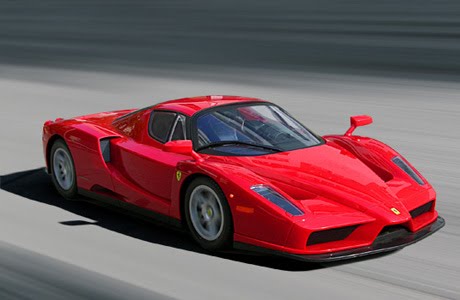The Mercedes-Benz SLR McLaren was discontinued a year ago, when the German automaker and British racing specialist decided to part ways. Mercedes has since released the SLS AMG, and McLaren has its new MP4-12C. But it looks like McLaren has one last ace up its sleeve for the old supercar.
The new SLR McLaren Edition sports revised bodywork (front bumper, grille, hood, side gills, rear diffuser, rims) and interior parts, along with upgraded steering and suspension components and new ceramic brakes. The 5.5L supercharged V8 appears to have been left untouched and is expected to deliver 626 hp, 575 lb-ft of torque, 207 mph top speed, and a 0-62 mph run in under 3.8 seconds.
In line with its name, the limited-edition car’s Mercedes badges have been given a smoked finish to blend in with the rest of the car, while the McLaren badges are highlighted in red. The company plans to build just 25 examples of the McLaren Edition, which it showed off recently at the Essen Motor Show in Germany. No word on pricing or availability, though we’d imagine they’re probably all spoken for already.
Mercedes-Benz SLR McLaren 2012 Specs
General
Manufacturer: Mercedes-Benz
Transmission:
Top speed: 331 km/h (205.67 mph)
Acceleration 0-100 km/h (0-60 mph): 3.0 s
Wheel drive: Front
Chassis
Body type: Cabrio, Open
Weight: 1825kg (4023 lb)
Number of doors: 2
Number of seats: 2
Wheelbase:
Length: 4656 mm (183.31 inc)
Width: 1908 mm (75.12 inc)
Height: 1261 mm (49.65 inc)
Total weight:
Clearance:
Boot space: 272 l
Front legroom: 1100 mm (43.31 inc)
Rear legroom:
Aerodynamics:
Passenger space:
Towing weight:
Engine
Displacement: 5.4 litre 5439 cc (331.89 cu in)
Fuel: Gasoline
Maximum power: 460.4 kW (617.4 hp) @ 6500 rpm
Maximum torque: 780 Nm (575.3 ft·lb) @ 5000 rpm
Fuel consumption combined: 14.9 l/km (0.16 mpg)
Fuel capacity: 95 litres (25.1 gallons)
Fuel highway: 10.9 l/km (0.22 mpg)
Fuel city: 21.7 l/km (0.11 mpg)
Bore x stroke:
Mercedes-Benz SLR McLaren 2012 ¨Pictures
 |
| Mercedes-Benz SLR McLaren 2012 |
 |
| Mercedes-Benz SLR McLaren 2012 |
 |
| Mercedes-Benz SLR McLaren 2012 |
 |
| Mercedes-Benz SLR McLaren 2012 from nfs mostwanted |
 |
| Mercedes-Benz SLR McLaren 2012 |
 |
| Mercedes-Benz SLR McLaren 2012 |
 |
| Mercedes-Benz SLR McLaren 2012 |
 |
| Mercedes-Benz SLR McLaren 2012 |
 |
| Mercedes-Benz SLR McLaren 2012 |































































